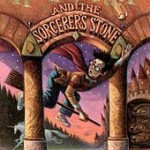 We (Edith Hope Fine and Judith Josephson) are the Grammar Patrol. Both of us taught for years and are now writers, with thirty plus books between us, including our two popular grammar guides, Nitty-Gritty Grammar and More Nitty-Gritty Grammar. For close to twenty years, we taught writing and grammar basics and now we blog about grammar for writers.
We (Edith Hope Fine and Judith Josephson) are the Grammar Patrol. Both of us taught for years and are now writers, with thirty plus books between us, including our two popular grammar guides, Nitty-Gritty Grammar and More Nitty-Gritty Grammar. For close to twenty years, we taught writing and grammar basics and now we blog about grammar for writers.
 Thanks to computers, we can now italicize with a keystroke. But that doesn’t solve this dilemma: When to italicize words and when to use quotation marks?
Thanks to computers, we can now italicize with a keystroke. But that doesn’t solve this dilemma: When to italicize words and when to use quotation marks?
Is it “Harry Potter” or Harry Potter? “Sixty Minutes”or Sixty Minutes? “Madame Butterfly” or Madame Butterfly?
 Let’s face it. Sometimes you just have to memorize the rules. If memorization isn’t your forte (and yes, we still say “fort,” but dink around on the Internet: the two-syllable “for-tay” is on the rise and no longer considered incorrect), we suggest consulting your favorite grammar book. Might we suggest our Nitty-Gritty Grammar or More Nitty-Gritty Grammar. (True confession: We both keep these grammar guides handy, especially for rules surrounding today’s topic.)
Let’s face it. Sometimes you just have to memorize the rules. If memorization isn’t your forte (and yes, we still say “fort,” but dink around on the Internet: the two-syllable “for-tay” is on the rise and no longer considered incorrect), we suggest consulting your favorite grammar book. Might we suggest our Nitty-Gritty Grammar or More Nitty-Gritty Grammar. (True confession: We both keep these grammar guides handy, especially for rules surrounding today’s topic.)
One friend, now a retired middle school English teacher, used this trick to help her students. She told them to think about this in terms of big pieces or little pieces. Big = italics. Small = quotation marks.
Check out these specifics:
Italics
First, some of the easier-to-remember uses of italics. Use italics:
• for scientific names: Tyrannosaurus rex
• for emphasis: “The will, as only Maxwell knew, made him the sole heir to their parents’ fortune.”
• for screen play directions, to show how a character should speak a line: Kermit (innocently): “It’s not that easy being green”
• for words from other languages: bon ami, piéce de la resistance, c’est magnifique, mea culpa, c’est fini, feng shui, E pluribus unum, Hasta mañana, baby!
Tip: Some foreign words (shish kebab, en masse, cafe latte, and maven) have been used so often that they are no longer italicized.